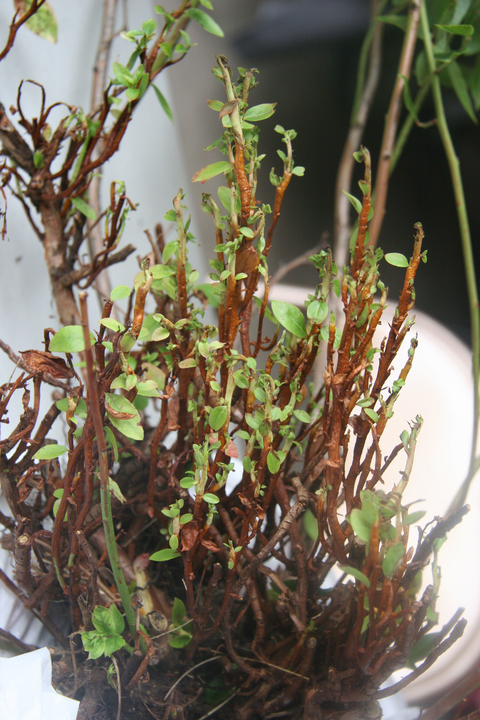Quick facts
- Witches' broom is caused by a rust fungus that infects both blueberry bushes and fir trees.
- This disease causes clusters of small branches known as witches' brooms to form at the base of the plant.
- Branches with witches' broom have small leaves and spongy, reddish bark.
- Witches' broom is most common on blueberries in northern Minnesota planted near fir trees.
- Since blueberry plants can’t be cured of this disease, dig up and dispose of infected plants.
How to identify witches’ broom
Symptoms on blueberries
- Clusters of small branches form at the base of the plant.
- Infected branches have small leaves.
- Infected shoots have spongy, reddish bark instead of normal green bark.
Symptoms on fir trees
- Individual needles turn yellow.
- Infected needles have rows of tiny white tubes. These release powdery yellow-to-orange fungal spores.
- Infected needles often fall off.
How does witches’ broom survive and spread?
- Witches' broom is caused by the rust fungus Pucciniastrum goeppertianum.
- This fungus spends half of it’s cycle on blueberry plants and half of its life cycle on fir trees.
- Spores are produced on infected fir needles.
- These spores are carried by wind and infect nearby blueberry plants.
- The fungus grows into the bark of the blueberry plants.
- The whole blueberry plant becomes infected.
- The fungus lives in the blueberry plant for many years.
- Each spring, spores are produced on the blueberry witches' broom.
- These spores then infect fir trees.
How to manage witches’ broom
- Do not plant blueberry plants within 500 yards of fir trees.
- It’s not possible to cure an infected blueberry plant.
Remove infected plants
- Fungicides can’t cure the plant or prevent new infections.
- Pruning out witches’ brooms will reduce the symptoms of the disease only for a short time. The fungus will remain in the bark of the plant and new witches’ brooms will form.
- Infected blueberry plants should be dug up and burned, buried or composted.
Reviewed in 2024




